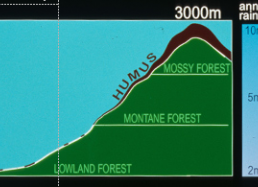Philippine Biodiversity
When people think about biological diversity and conservation, they're likely to quite accurately name eastern Africa, the Amazonian rainforest, and perhaps Madagascar as very special places where remarkable plants and animals live. While it's true that some of these places have more total species, all are much larger in size than the biological storehouse that is the Philippines.
This isolated group of 7,000 small islands may harbor the greatest concentration of unique species per unit area in the world. Approximately 33 percent of its plants, 75 percent of its amphibians, 70 percent of its reptiles, and 44 percent of its birds can be found only on the Philippine archipelago. Among mammals, the focus of Dr. Heaney’s expedition, at least 140 species (75 percent) live nowhere else, including the world’s largest and smallest bats, the largest rats, and the smallest water buffalo—many species with ecology and behavior that is utterly unexpected.
Diversity & Geology
Why do the Philippines harbor such diversity? The answer lies in the islands' geology. Entirely surrounded by tropical seas, the Philippines are separated from the Asian landmass by hundreds of miles of open water in most directions. Geological evidence now makes it clear that this isolation has existed since the volcanic chain of islands formed 50 million years ago.
Because of this isolation, the archipelago's animal species arrived primarily by flying, swimming, or floating on flotsam during storms. On larger islands mountain peaks separated by swaths of lowlands further isolated species, preventing interbreeding and gene flow between populations. As a result, in many cases a single animal ancestor gave rise over time to five, ten, or even 25 descendent species, all within the Philippines.
Elevation, Climate, & Rainfall
Differences in rainfall, temperature, and elevation give rise to three major types of rainforests, each with a unique set of plants and animals:
Tropical lowland rainforests have poor soils, but the constant heat and humidity foster the growth of vibrant vegetation in the canopy and along the trunks of towering, butressed trees. Lianas and other draping vines provide a natural highway for monkeys, squirrels, civet-cats, and lizards to scamper from the dark forest floor into the sunlight far above.
Montane rainforests start at about 1,000 meters in elevation and are made up of shorter trees festooned with vine-like pandans, members of the palm family. Rainfall here is high—two or three times that of the lowland forests—leaving the trees dripping with water most of the time.
Mossy cloud rainforests begin at 2,500 meters and can average more than ten times the rainfall of Portland, Oregon. During most of the year, clouds cling to the mountainsides, saturating the five-foot-thick layer of rich, springy soil. Long strands of moss hang from dwarf trees, kept small and twisted by high winds and steep terrain. These elfin, fairytale forests have proportionately the highest numbers of unique species, including remarkable worms, mice, rats, frogs, and birds.
Documenting Diversity
The number of previously unknown species being discovered in these Philippine habitats is currently among the greatest in the world. The Field Museum’s Philippine Mammal Project discovers at least four new species nearly every year, including several with fascinating natural histories, such as the worm-eating Isarog striped shrew-rat (Chrotomys gonzalesi), the tree-dwelling "mystery mouse" that still awaits an official name, and one of the world's smallest flying foxes, the Mindoro pallid flying fox (Desmalopex microleucopterus).
For a field biologist who studies biological diversity, the Philippines is, in many respects, a dream come true—a place where new discoveries lie around every corner.




